
Original Kershaw County courthouse in Camden
Nickname(s): Steeplechase Capital of the World
Camden is a city in and the county seat of Kershaw County, South Carolina, United States. The population was 6,682 at the 2000 census. It is part of the Columbia, South Carolina, Metropolitan Statistical Area.
History
Camden is the oldest inland city in South Carolina. In 1730, Camden became part of a township plan ordered by King George II. Kershaw County’s official web site states, “Originally laid out in 1732 as the town of Fredricksburg in the Wateree River swamp (south of the present town) when King George III ordered eleven inland townships established along South Carolina's rivers, few of the area settlers chose to take lots surveyed in the town, choosing the higher ground to the north. The township soon disappeared.” In 1758, Joseph Kershaw, from Yorkshire, England came into the township, established a store and renamed the town Pine Tree Hill. Camden became the inland trade center in the colony. Kershaw suggested that the town be renamed Camden, in honor of Lord Camden, the champion of colonial rights.
May of 1780 brought the American Revolution to Charleston, South Carolina, and Charleston fell. Lord Charles Cornwallis and 2,500 of his troops marched to Camden and established the main British supply post for the Southern campaign. The Battle of Camden, the worst American defeat of the Revolution, was fought on August 16, 1780in Camden and another battle between around 1,400 American troops led by General Nathanael Greene battled with 950 British soldiers led by Lord Francis Rawdon on April 25, 1781. The last battle was a costly win for the British, but it forced the Redcoats to leave Camden.
Camden was not involved directly with the Civil War, however did send a few generals. Camden moved on from the war, and in 1885, it became a place where rich Northern families would migrate to in the winter. The town became associated with many equestrian activities, and is now the home of the third oldest active polo field in America. In the winter, more than 1,500 thoroughbreds call the field home. According to Kershaw County’s web site, “Horse related activities became very popular. That interest in equine activities has continued and today the horse industry is a major part of the county economy. For that reason, the county is known as the ‘Steeplechase Capital of the World’.”

The Kershaw House, Georgian mansion first built, 1775-1780, by Joseph Kershaw, merchant and leading citizen of Camden became the headquarters for the occupying British army, 1780-1781. It burned in 1865, and was the object of an archaeological dig in 1968. Then it was rebuilt from 1974-1977.
The Carolina Cup
The Carolina Cup is an annual event held on either the final Saturday in March or the first Saturday of April. The first race was held March 22, 1930 and has been held every year since, with the exception of 1943 and 1945, during World War II. The races have become a South Carolina tradition, and normally draws a crowd of over 70,000 spectators. The "Cup" has become a premier social sporting event. Springdale Race Course is also home to the Marion du Pont Scott Colonial Cup held on the third Sunday in November annually.
Among major steeplechase horse races, it is unique in that because of South Carolina state law, gambling on horse racing is prohibited.
Transportation
Seaboard Air Line Railway Depot
Woodward Field, also known as Kershaw County Airport
Notable natives:
American actor and Broadway performer Samuel E. Wright
Larry Doby - first African American to play in the American League
Bobby Engram - NFL player
Vonnie Holliday - NFL player
Richie Williams - CFL player
Camden In Pictures:
Architecturally and militarily significant, Camden was a center of activity in both the Revolutionary and Civil Wars, and its architecture reflects the two centuries of its growth. The city was named in honor of Lord Camden, British champion of colonial rights. In 1774 wide streets were laid off in a grid pattern. The town expanded northward as shown in a 1798 plat. The plat set aside six parks which formed the basis for the city’s present 178 acres of beautiful parkland. Most of the original town was destroyed by the fire of 1813. This accelerated growth northward to the Kirkwood area, north of Chesnut Street. Originally, the houses in this area were summer cottages, but by 1840 Kirkwood was a year-round residential area of handsome mansions and elaborate gardens. Many of the mansions were built around the cottages, which still survive at their core. Contributing properties are mostly residential but also include public buildings, a church, and a cemetery. Camden’s architecture is classically inspired and includes examples of Federal and Classical Revival, in addition to cottage-type, Georgian, Charleston-type with modifications, and mansion-type houses. Several of the city’s buildings were designed by noted architect Robert Mills. Listed in the National Register May 6, 1971.
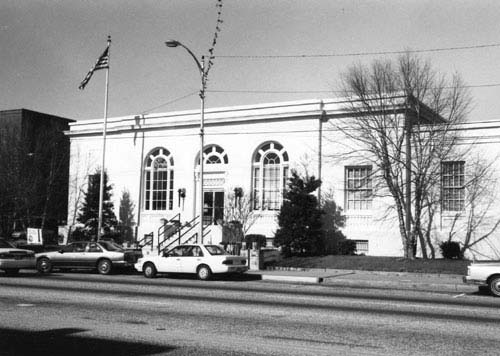
U.S. Post Office, 105 DeKalb St. (Constructed: 1915)
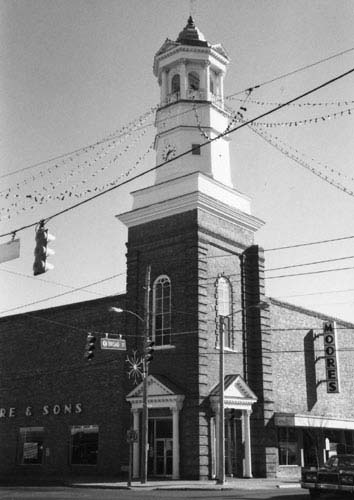
Camden Opera House and Clock Tower, 954 Broad St. (Constructed: 1898 Style: Classical Revival)
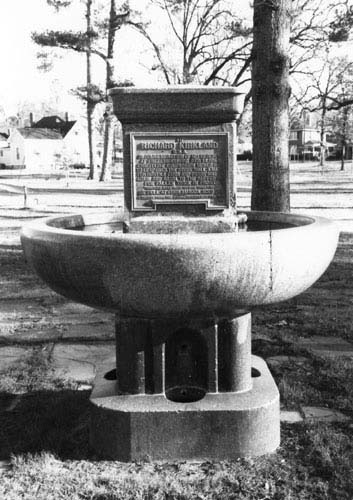
Richard Kirkland Fountain, DeKalb and Lyttleton Sts. (Constructed: 1904)
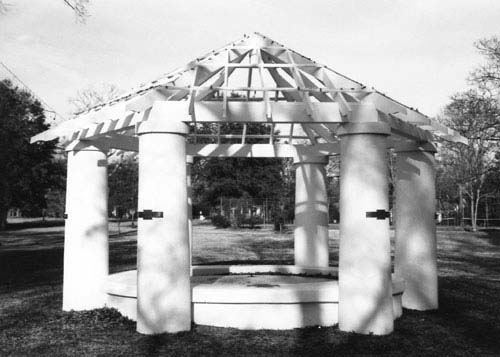
Pantheon (Confederate Generals) Monument, Lyttleton St. and Rectory Square (Constructed: 1911 Style: Classical Revival)
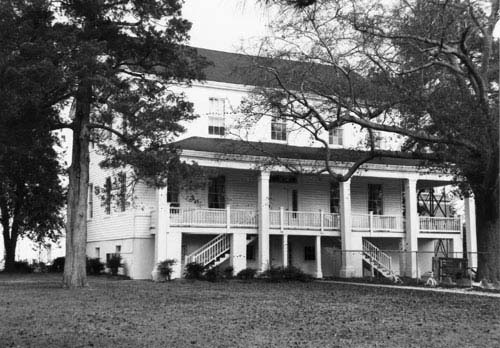
Lyttleton St. Methodist Church Parsonage, 314 Hampton St. (Constructed: ca. 1851)
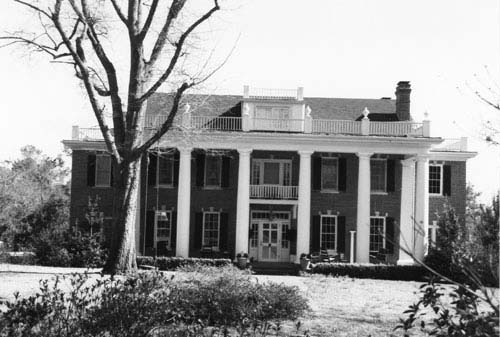
Henry Savage, Sr. House, 1812 Brevard Place (Constructed: 1917 Style: Classical Revival)
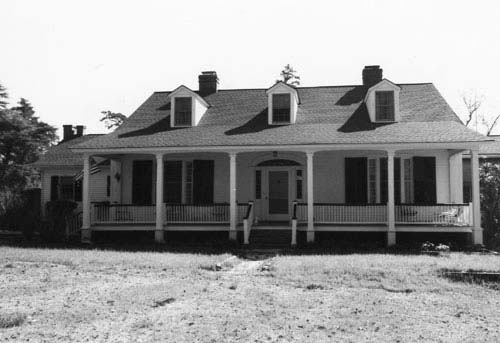
Gov. Fletcher House, 1813 Brevard Place (Constructed: 1920 Style: Colonial Revival)
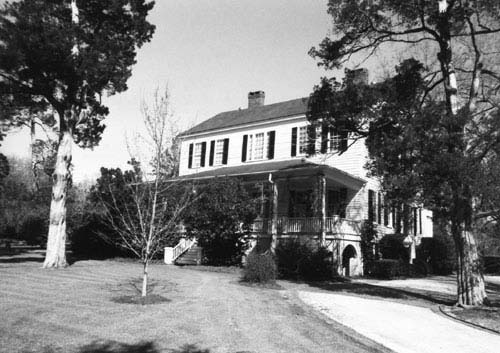
Dr. Alfred Brevard House, 1816 Brevard Place (Constructed: ca. 1827 Style: Greek Revival)
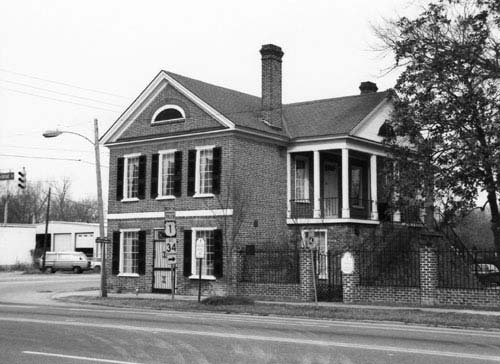
Price House, 722 Broad St. (Constructed: ca. 1830 Style: Greek Revival)
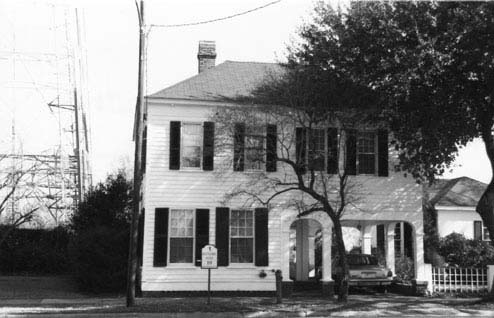
James Aiken House, 1204 Broad St. (Constructed: ca. 1830)
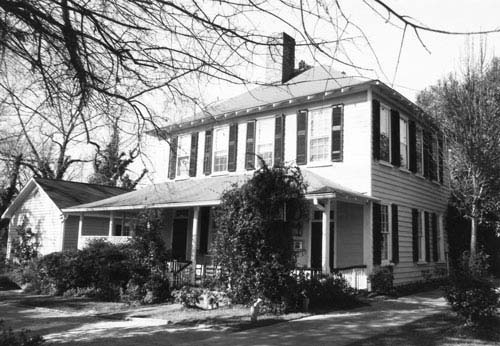
John McCants House, 1301 Broad St. (Constructed: ca. 1813)
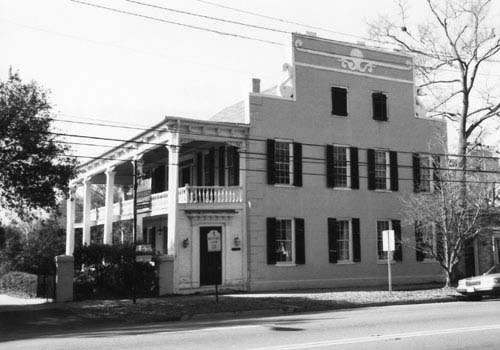
Greenleaf Villa (Samuel Flake House), 1307 Broad St. (Constructed: ca. 1810)
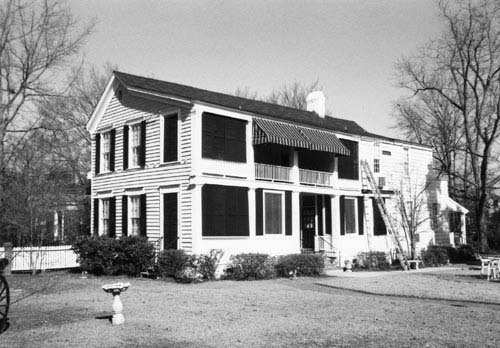
Joshua Reynolds House, 1310 Broad St. (Constructed: ca. 1816)
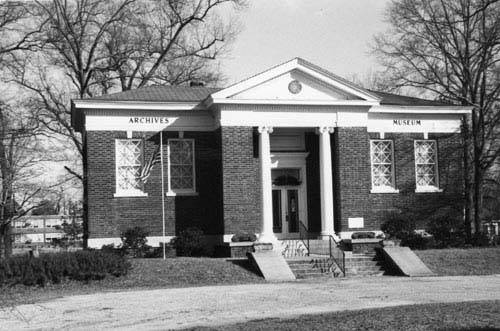
Camden Public Library, 1314 Broad St. (Constructed: 1915 Style: Classical Revival)
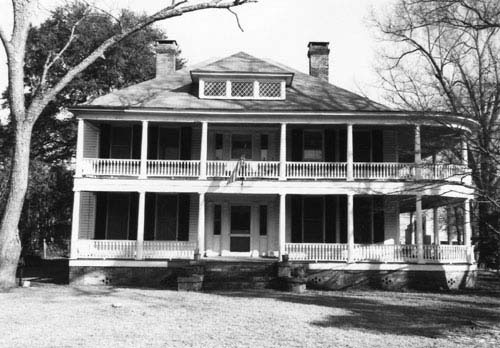
James H. Clyburn House, 1410 Broad St.(Constructed: ca. 1903 Style: Colonial Revival)
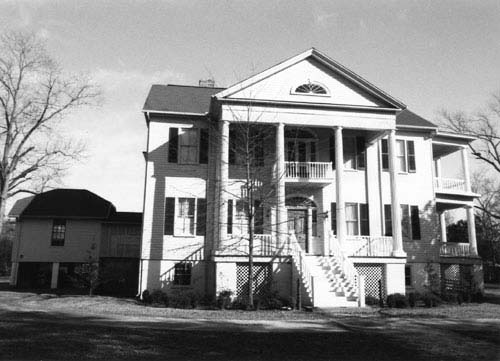
Charles John Shannon House, 1502 Broad St.(Constructed: 1832 Style: Greek Revival)
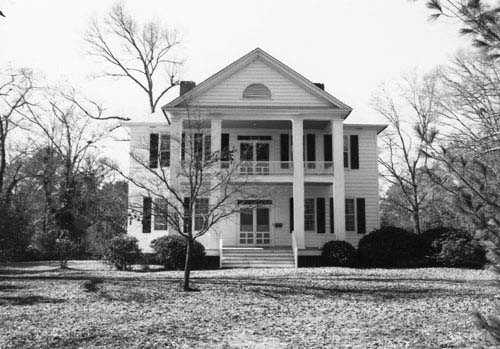
Stephen Clyburn House, 1707 Broad St.(Constructed: ca. 1860 Style: Classical Revival)
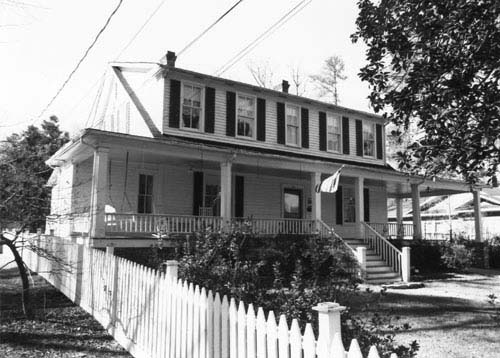
Judge N. Crawford Arnette House, 1711 Broad St.(Constructed: ca. 1893 Style: Colonial Revival)
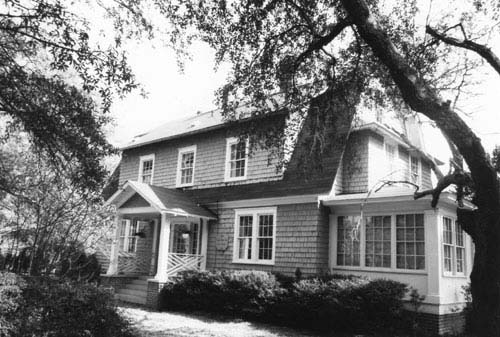
2012 Broad St. (Constructed: 1884 Style: Colonial Revival)
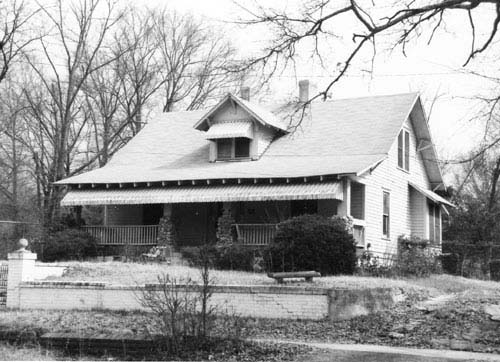
Abraham Jones House, 1316 Campbell St(Constructed: ca. 1920 Style:Craftsman/Bungalow)
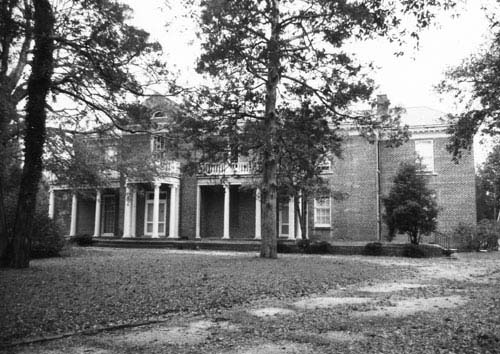
Sarsfield, 130 Chesnut St.(Constructed: ca. 1837)
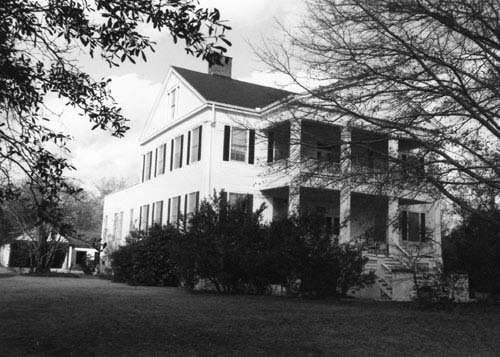
Dr. L. H. Deas House, 314 Chesnut St.(Constructed: ca. 1853 Style: Greek Revival)
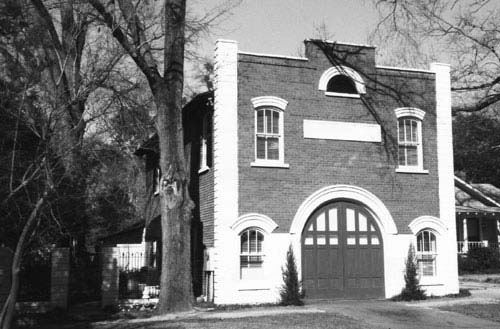
Kirkwood Fire House, Reel No. 7, 506 Chesnut St.(Constructed: 1907 Style: Romanesque)
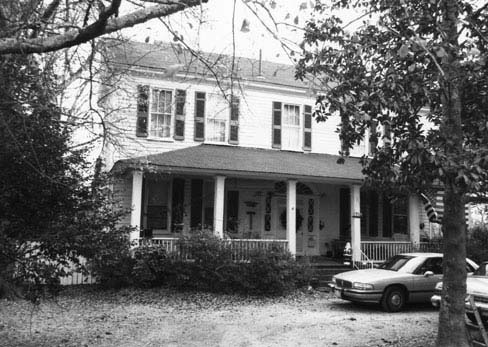
Mary Kershaw House, 1214 Fair St. (Constructed: ca. 1843)
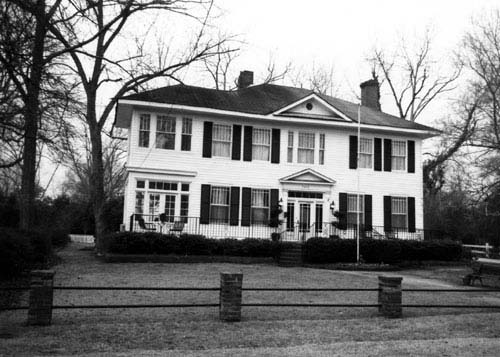
James H. Burns House, 1413 Fair St.(Constructed: 1915 Style: Colonial Revival)
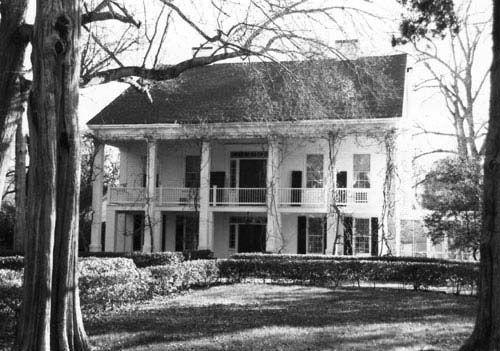
General John D. Kennedy House, 1818 Fair St. (Constructed: ca. 1850)
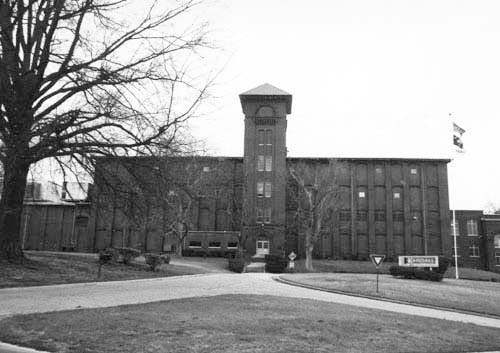
Kendall Mill, 90 Hampton St. (Constructed: ca 1899)
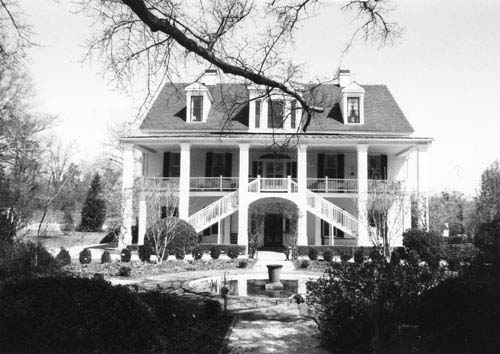
Horse Branch Hall, 102 Kirkwood Lane (Constructed: 1840 Style: Greek Revival)
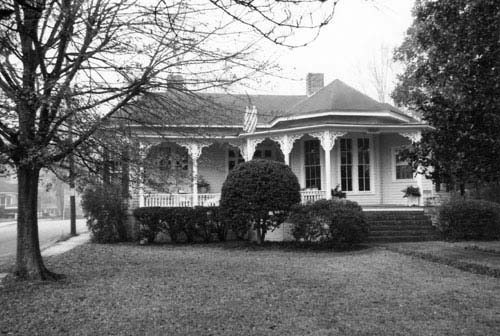
Jake Herschberger House, 1209 Lyttleton St.(Constructed: 1886 Style: Queen Anne)
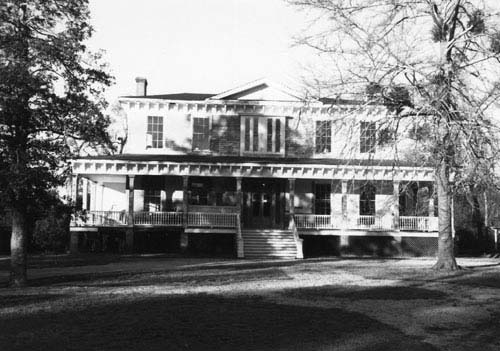
Hobkirk Inn (Col. William Shannon House), 1919 Lyttleton St. (Constructed: ca. 1860
Style: Italianate)
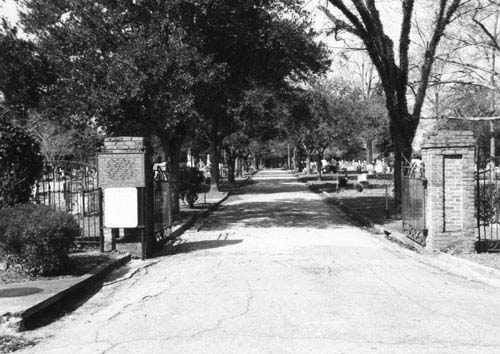
Quaker Burial Ground, Campbell St.
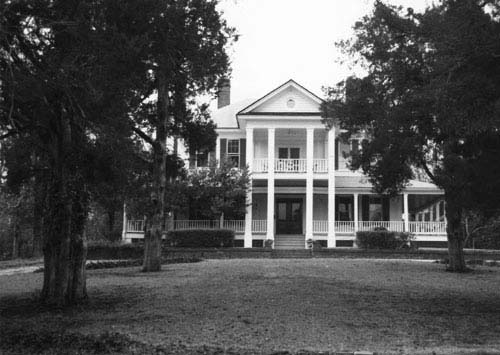
Lewis Ciples House, 406 Greene St., Constructed: ca. 1863
Carter Hill Plantation
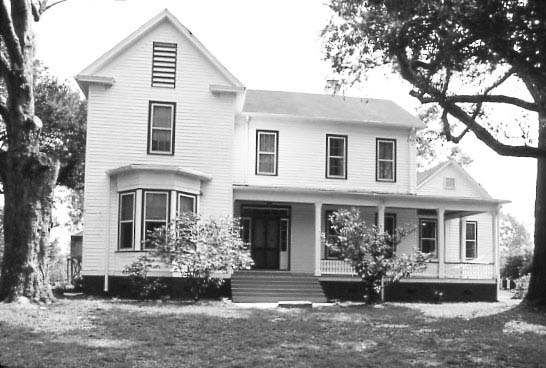
Fasade
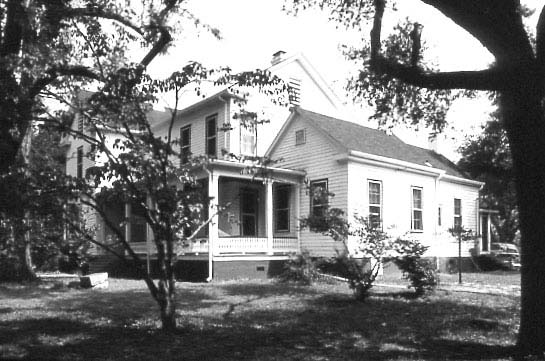
Carter Hill, Right Oblique
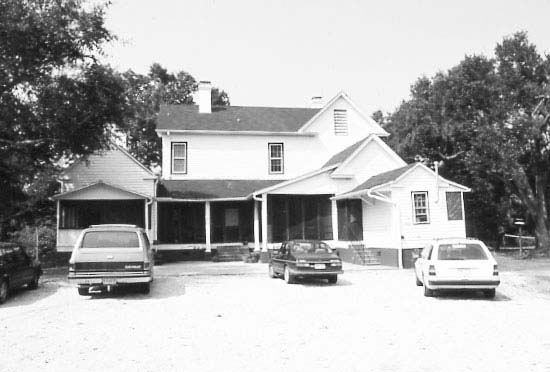
Rear Elevation
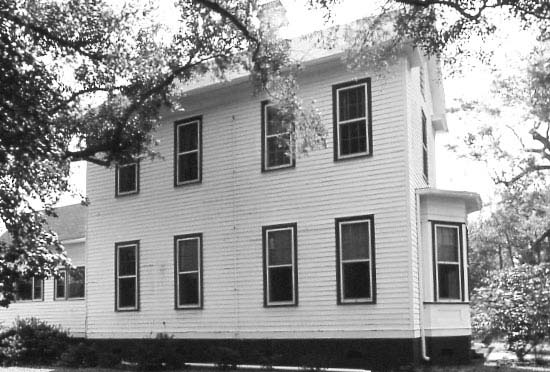
Left Elevation
Carter Hill plantation complex was once part of a large tract called Mill Tract Plantation, which began to be consolidated by the Boykin family in the late eighteenth century. The Carter Hill tract and surrounding acreage was acquired by Burwell Boykin by 1819, and was added to his acreage along Swift Creek. The Boykin family did not make Carter Hill their home until 1875; prior to this the tract was managed by an overseer employed by the Boykin family. It is a prime example of the system of management of large plantations in South Carolina during the eighteenth and nineteenth centuries, when overseers often were given primary responsibility for smaller tracts within the larger plantation, or responsibility for an entire plantation in a different part of the state. Carter Hill is a well-preserved example of a plantation complex. The overseer’s house is extant, now incorporated into the main house built in ca. 1875. The overseer’s house built in ca. 1840, provides insight into the status of the overseer in the plantation system. It was a one room house, simply designed, but well-built and comfortable. It incorporated architectural elements fashionable when it was built—the Greek Revival influence can be seen in the cornice returns and gable-end configuration. The main house reflects the rural Victorian architectural style predominant after the Civil War. The outbuildings (including a log building, a frame building, a pump house, a smokehouse, a dovecote, a hen house, and a barn) constructed at various times during the nineteenth century, provide insight into the functions of a working plantation and the buildings necessary in running it. Listed in the National Register September 24, 1992.
The Kendall Mill Historic District is centered around the Wateree Plant and associated structures that date from 1899 to 1923. The district contains eight properties of key historic or architectural significance and 113 supporting properties which illustrate the growth of the companies which utilized the plant through the years. The mill village to the south and southeast of the plant was built between 1900 and ca. 1925 and is a virtually intact reminder of the importance of the textile industry to South Carolina. The mill faces Kendall Park, a ten-acre landscaped park. On the eastern border of the park are the mill supervisors’ houses, built between 1900 and ca. 1925. The operatives house consist of one-story, one-and-one-half-story, and a few two-story frame houses which date from 1900 to 1923. The district also includes Kendall Lake, north of the mill. The Dekalb Cotton Mill was organized in 1899. The Dekalb Mill building, designed by W.B. Smith Whaley in the Romanesque Revival style, was considered a model of textile architecture. The original plant building is a four-story rectangular brick building with a back stair tower and an imposing six-story front stair tower. The west addition to the plant, which is in keeping, architecturally, with the older buildings, was constructed in 1964. Listed in the National Register March 19, 1982.
Mulberry Plantation, Kershaw County (U.S. Hwy. 521, Camden vicinity)
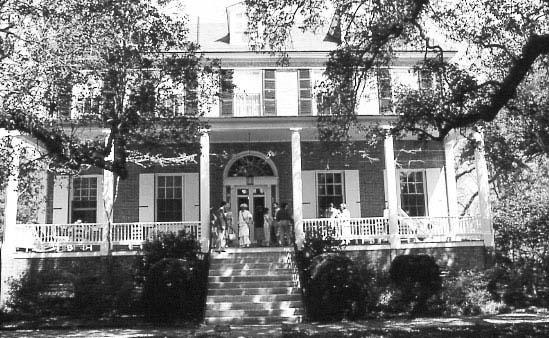
Facade
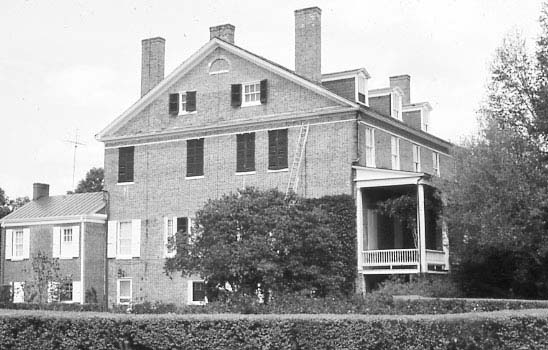
Left Elevation
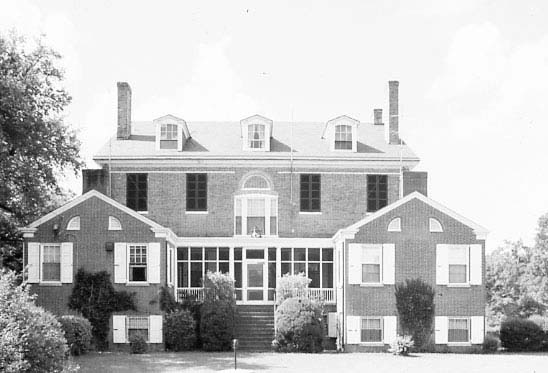
Rear Elevation
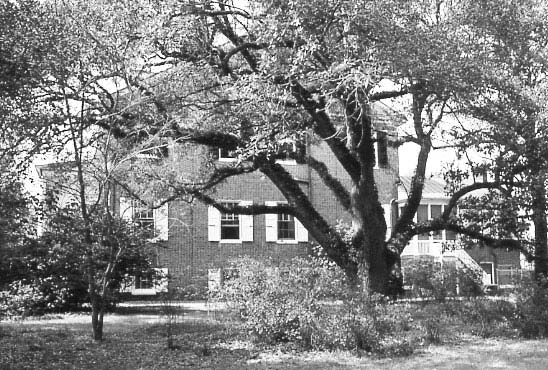
Right Elevation
Servant's Cottage
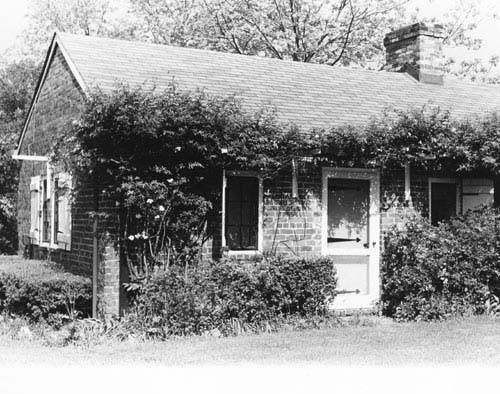
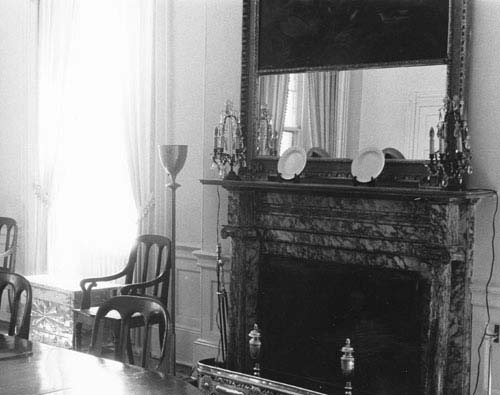
Interior With Fireplace
Mulberry Plantation is historically notable for its association with members of the Chesnut family, particularly politician and General James Chesnut IV (1815-1885) and his diarist wife, Mary Boykin Chesnut (1823-1886). The range of their influence in things political, military, social and literary helped shape the history of the county, the state, and the South. Boykin is best known for her book A Diary From Dixie. A woman of brilliant social gifts, intelligent, and above all articulate, her husband’s career put Mary Chesnut in close touch with the men and women at the center of the social, military, and political life of the South. Her diary remains a prime source for any researcher into the period of American history from 1860-1865. Mulberry is architecturally significant as a remarkably fine example of the Federal style, particularly in its interior details, and for retaining its integrity of association, setting, design, materials, and workmanship. It is Georgian in its massing but of purely Federal derivation in its narrow fenestration, curving lines expressed in the fanlight and semi-circular arch of the dormer windows, and the light treatment of the portico by the wide spacing of slender columns. The approximately 60 acres nominated includes three contributing outbuildings: a one-story ca. 1820 servant’s cottage with a modern addition, and two ca. 1840 log barns. The house is approached by a long oak lined carriage lane which follows a causeway over a large pond. Listed in the National Register November 25, 1980; Designated a National Historic Landmark February 16, 2000.
Cool Springs, Kershaw County (726 Kershaw Hwy., Camden)
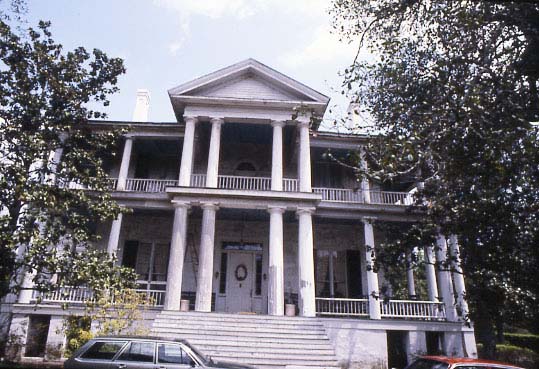
Facade
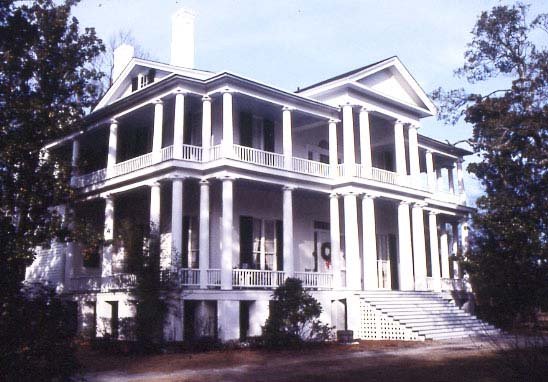
Left Oblique
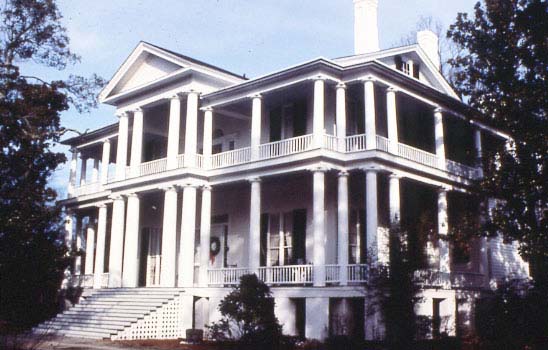
Right Oblique
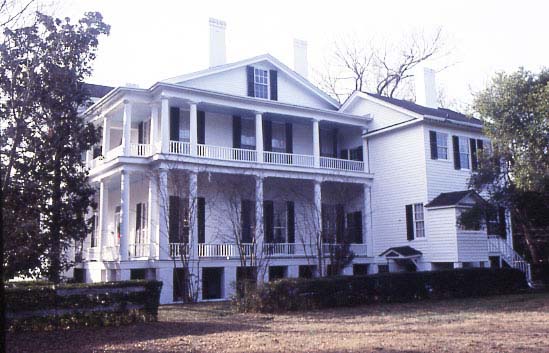
Right Elevation
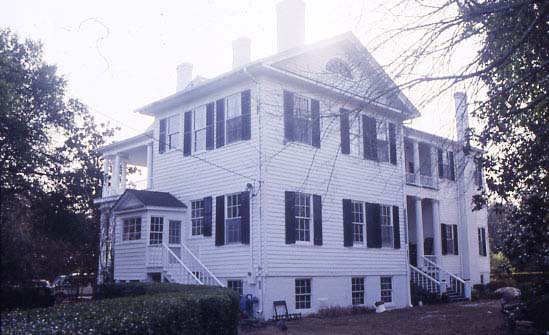
Right Rear Oblique
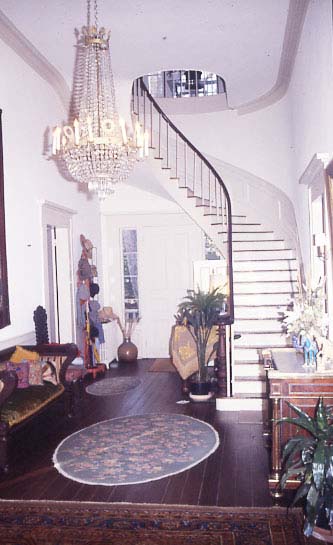
Interior Hall
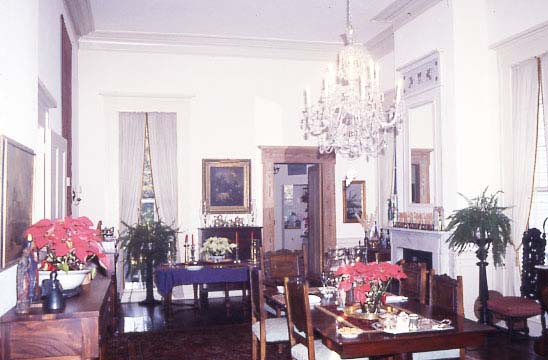
Interior Dining Room
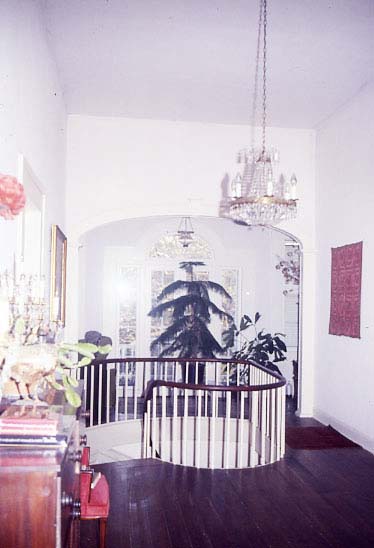
Interior Second Floor Landing
Cool Springs remains one of the finest examples of Greek Revival architecture in the midlands of South Carolina. Cool Springs is a two-story Greek Revival house elevated on a raise brick basement. The original house was constructed ca. 1832 by John Boykin, a planter and lawyer. The house, originally a summer residence, was part of a summer pineland village such as those used by antebellum South Carolina planters as retreats from their plantations during the sickly summer season. The original house was remodeled, probably by architect Reuben Hamilton, in the 1850's during the ownership of the Cureton family. His additions to the original house transformed it into a showcase of the Greek Revival style. This updating the older house made it one of the most notable mansions in the area. The ca. 1850 alterations to the house included the tiered portico and the addition of verandas, supported by 64 Doric columns. The interior was redesigned at that time as well. Alterations included moving the chimneys to the exterior walls, and a set of two-story rectangular additions to the east façade. By 1935, a two-story kitchen addition was attached to the northeast corner of the house. Interior features include paneled wainscoting, plaster cornice molding, a curving stair, Egyptian-influenced doors and windows with battered surrounds and crossettes, and ceiling medallions. Contributing to the nominated acreage are two horse stables, a concrete piscatory, an old stone spring, a brick basin, a dam, and granite gate posts. Listed in the National Register September 28, 1989.

The Seaboard Air Line Railway Depot is significant as a representative example of a mid-twentieth-century railroad station and for its role in the economic development of the local area. By the late 1930s the volume of passenger traffic in Camden had increased markedly, leading Seaboard officials to build a new station. The brick, one-story station, built at a cost of $30,000 by the Wadesboro Construction Company of Wadesboro, North Carolina, was a replica of the Seaboard station at Williamsburg, Virginia. It replaced the original Seaboard freight and passenger depots in Camden, which dated to 1900. The new station opened on November 25, 1937, and was a gala affair. The building has undergone no significant alterations since its construction and retains historical appearance and integrity. The design of the station reflected contemporary trends in architectural style and the functional requirements of small-town railroad depots. The influence of the Colonial Revival style was evident in exterior details such as quoins, gable-end pediments with bold, decorative medallions, and the symmetry of overall design. A passenger shed over 400 feet long, reputedly “one of the longest on the Seaboard system,” was erected at trackside in the rear of the building. The arrangement of the interior space made clear the building’s fundamentally utilitarian role. As soon as it entered operation, the new station immediately assumed a place at the center of civic affairs in Camden. Listed in the National Register June 2, 2000.
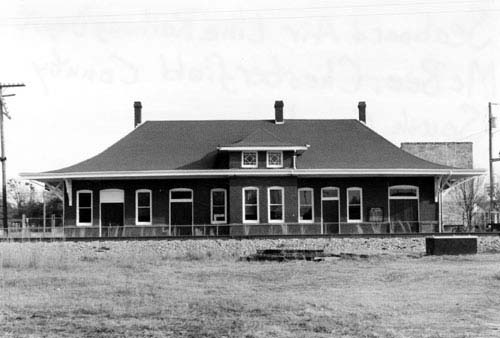
Facade
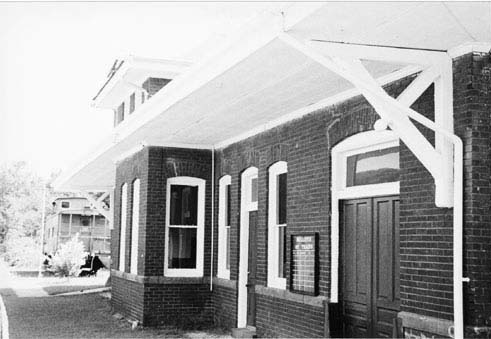
Right Oblique
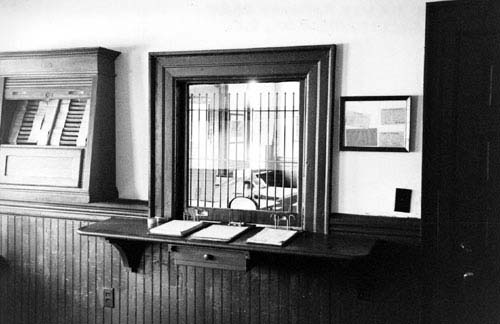
Interior Ticket Window
External links:
Kershaw County Chamber of Commerce and Visitor's Center


